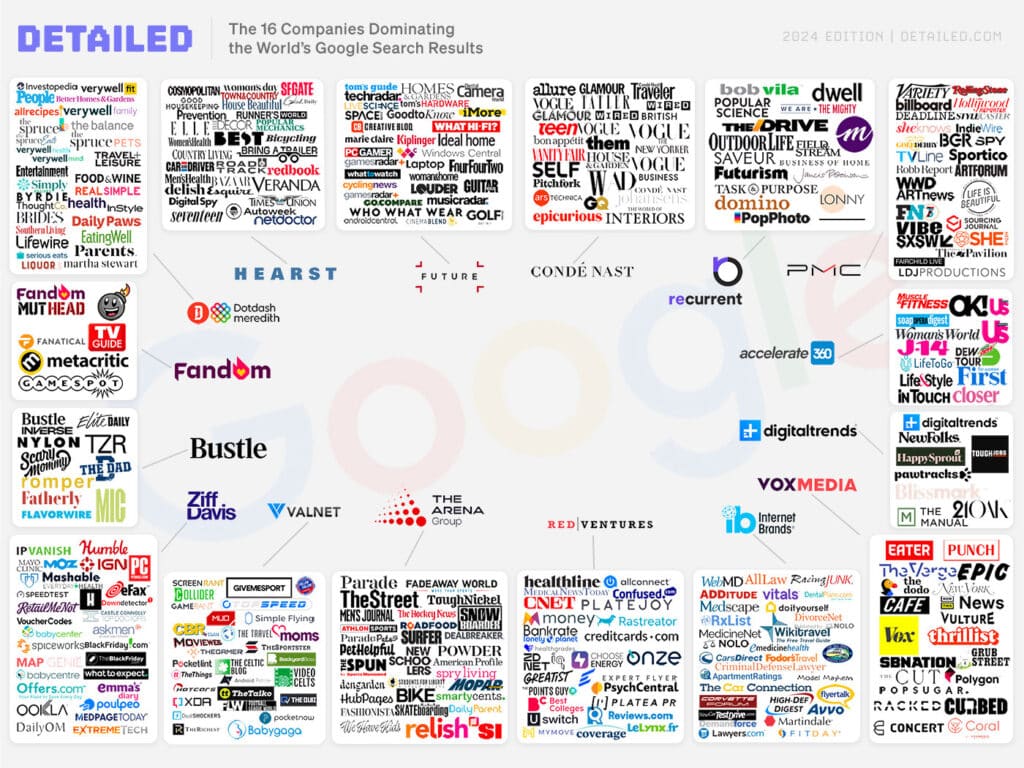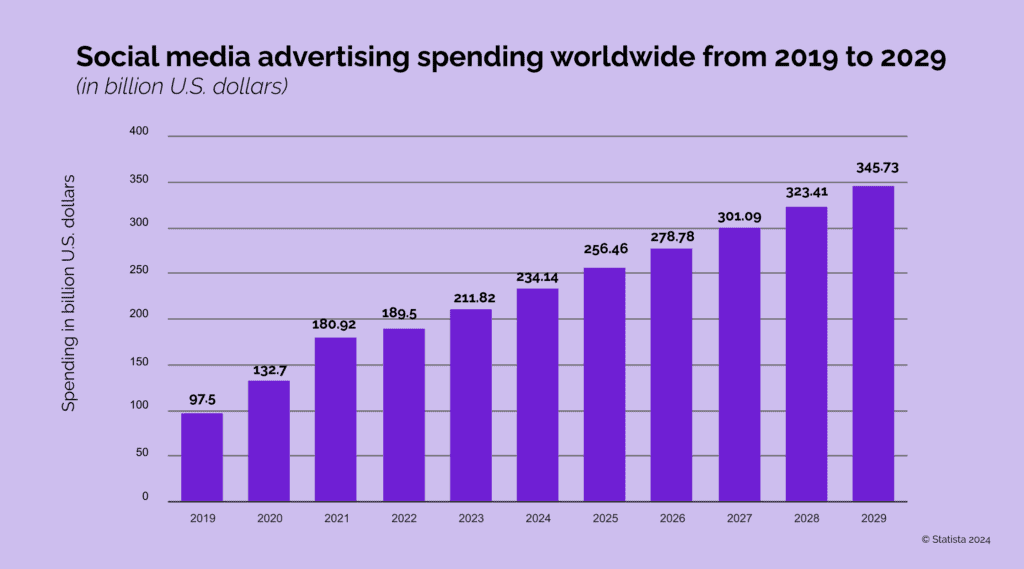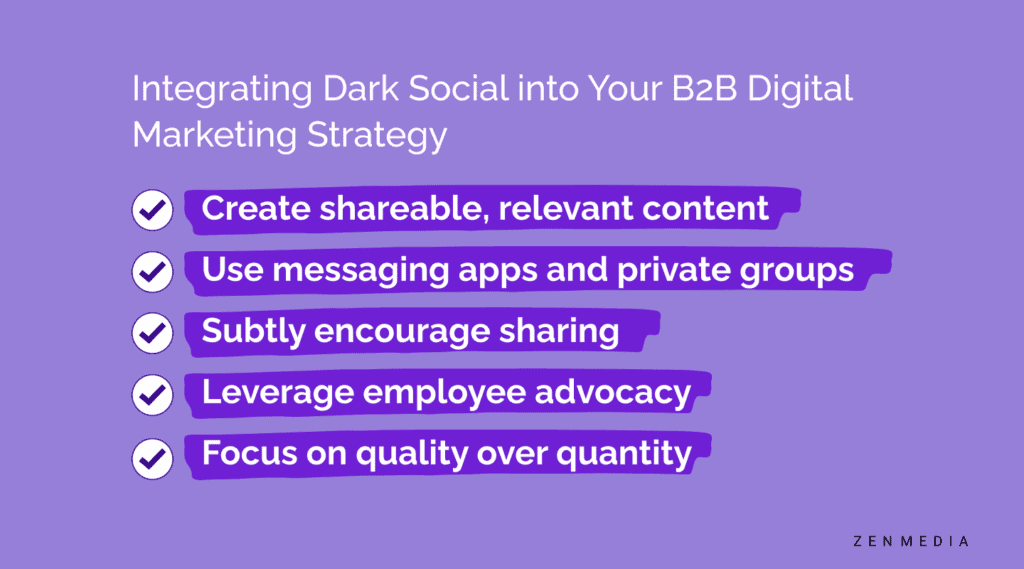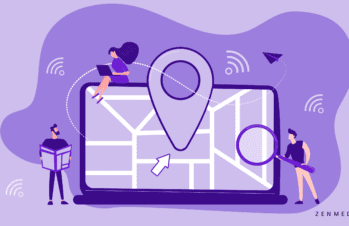In 2020, AI-generated content was a novelty. In 2024, it’s a nonstop avalanche. Most of us have already experienced the weirdness of scrolling through LinkedIn and realizing that every third post and comment is written by a robot. It’s not a stretch to imagine that by 2030, AI content could even further saturate the internet. So, if you’re feeling a little lost in the matrix, you’re not alone.
A recent study found that humans can distinguish AI-generated text from human-written text roughly 53% of the time—that’s just barely better than making a random guess. And this spans all levels of education and expertise. For example, in a healthcare-related study also published this year, healthcare professionals were only able to correctly identify if abstracts (content) were generated by human or AI 43% of the time on average, with accuracy ranging from 20% to 57%.
So, sophisticated AI models trained on incredible amounts of data can now produce increasingly human-like content at sci-fi speeds. And that’s leading people from all walks of life to wonder:
Did a Human Really Write This?
…And how much will that matter moving forward? Because experts predict that by 2030, up to 99.9% of online content could be AI-generated. That means we’re potentially looking at a future—one that’s, you know, only five years away—where finding authentic, human-created content online might be like searching for a needle in a very large virtual haystack.
But what does this mean for B2B marketers and content creators? And how can businesses ensure their message doesn’t get lost in a cacophony of AI-generated noise?
As a B2B marketing agency, we’ve definitely got a horse in this race, and that’s why we’re exploring what’s really going on with AI content creation, including unmasking the Dead Internet Theory and the untapped potential of dark social.
Join us as we go down this rabbit hole because the future is here. It’s been here. And for those of us who grew up with dial-up, it might feel like things are coming full circle.
The Dead Internet Theory
First, there were filter bubbles, where everyone from cyber experts to presidents began warning the world about the dangers of the echo chambers created by pushy algorithms sending targeted, specific content to internet users (which is to say, basically all of us). Today, with the advent of AI and all the creativity and power it promises, we’re also faced with the following dystopian concept: The Dead Internet Theory.
The Dead Internet Theory suggests that the majority of internet content and traffic today is generated by bots and AI, not humans. This concern has been gaining traction for a while, with articles popping up yearly in outlets like New York Magazine with titles like “How Much of the Internet Is Fake? Turns Out, A Lot of It, Actually.” Naturally, conspiracy theorists who’ve really run with the notion allege that the internet “died” in 2016 and governments are using it to shape public perception, and so on. And after researching this topic, I’m all out of tin foil, believe me. But like all conspiracy theories, there is a grain of truth to the paranoia:
There Really Are a Ton of Bots Out There
For example, Thales’s 2024 Imperva Bad Bot Report—a global analysis of automated bot traffic across the internet from a cybersecurity perspective—revealed that 49.6% of all internet traffic came from bots last year. That’s 2% more than last year and the highest level recorded by the company since it started monitoring this back in 2013.
The same report emphasizes that every industry has a growing bot problem, from gaming to retail, from travel to law and government, and from entertainment to financial services—you name it, and advanced bots capable of evading cybersecurity defenses and mimicking human behavior are steadily and steeply on the rise.
A similar report from a different agency regarding web scraping—the process of using bots to extract data from websites—explains that 65.3% of bot traffic comes from malicious bots capable of compromising login credentials (phishing), degrading or altogether derailing website performance and availability (DDoS attacks), and generally polluting site metrics.
But wait, there’s more.
A Search Giant’s SEO Scandal
Earlier this year, Google acknowledged a surge in search results featuring websites that seem to be created for search engines rather than human readers. Google even admitted that generative AI is playing a significant role in this content explosion, potentially pushing more valuable human-made alternatives further down the search results.
Then, a few months later, Rand Fishkin of SparkToro published a bombshell article detailing how Erfan Azimi, an SEO practitioner, had contacted him and shared piles of leaked data and API documentation from Google’s Search division. This data revealed that generative AI websites aside, Google hasn’t been truthful with marketers about what really influences search results—for years.
As our CEO, Shama Hyder, explained in a LinkedIn post about this issue, “It’s a meritocracy, and it is not a level playing field.”

Source: How 16 Companies are Dominating the World’s Google Search Results
So, not only does the world’s top search engine deeply curate SEO results, it’s also like we’ve entered an SEO twilight zone where content is optimized for algorithms instead of actual people…in order to reach actual people. And any marketer or content writer with SEO experience will tell you: In an effort to try to compete with the “Big 16” Google-favored, first-page companies, content has to:
- Leverage specific, long-tail keywords (often found in Big 16 blog posts and site content)
- Be of or slightly above a certain word count (as compared to Big 16 content)
- Have a similar amount of pictures (to the 16 entities and subsidiaries that Google ranks highest)
Do you see a pattern? Today, in order to rank on Google’s first page, Google’s own practices heavily encourage that content should sound, look, and feel relatively similar to—frankly—its competition just to be seen at all. And when the reality is that 0.44% of users visit Google’s second page of search results and Google holds roughly 90% of the search engine market share (Bing comes in a close second at 3.93%…), it’s like we’re all seeing the internet through one giant lens.
Therein lies the challenge for B2B marketers—or heck, anyone—who might be feeling at a loss when it comes to connecting their marketing efforts and unique, authentic content with an interested, engaged audience.
So, what’s one place you’re sure to find an audience?
Social media.
The Internet is Getting Smaller
You might remember the early, wild days of the internet. You might have been introduced to it by one of the many AOL CDs delivered to your mailbox. People had their own GeoCities pages, complete with a tiled, possibly animated GIF background, blinking text, and yellow “Under Construction” illustrations. And there were completely different forums for all kinds of interests, from gardening to Godzilla and everything in between.Fun fact: According to Jan Brandt, AOL’s former Chief Marketing Officer, at one point, 50% of the CDs produced worldwide had the AOL logo on them

What to do with all those AOL CDs
Source: Eco Fab Fashion “Trash Couture” photo by Todd Youngblood
Well, those days are gone. Today, we’ve largely traded in our unique digital spaces for streamlined and curated social media platforms.
This year, 67.1% of the global population are considered “internet users.” Of that number, which represents 5.45 billion people, 95% use social media. Over the past few decades, we’ve all consolidated our virtual time, energy, and attention to social platforms like Facebook, Instagram, YouTube, Reddit, and TikTok.
And Facebook (Meta) owns Instagram.
And Google (Alphabet) owns YouTube.
And Condé Nast (Vogue, The New Yorker, GQ, Glamour, Wired—it’s one of the “Big 16”) owns Reddit.
Challenges for B2B Marketers
Is there a place where your brand’s target audience is already gathered and spending lots of time? Yes.
Is practically everyone in your niche competing for their attention in that space? Also, yes.Social media has drastically changed where we spend our time online. And as our digital world shrinks, the money and investment we’re making into it is simultaneously exploding. Worldwide spending on social media ads more than doubled since the pandemic, hitting $226 billion in 2022 and projected to reach $345.73 billion by 2029.

Why? Because brands are essentially trying to have a conversation at a rock concert everyone’s been invited to—it’s possible, but you really have to shout in order to be heard.
And in this environment, B2B marketers must help brands not only reach their target audiences but convert them into paying customers. They must adhere to SEO best practices while doing everything in their power to honor unique brand voices and perspectives, and it’s vital to keep content authentic, accurate, and engaging.
That’s why AI is such a double-edged sword. On one hand, AI tools offer unprecedented brainstorming, efficiency, and scalability for human-centric marketing. AI technology is an undeniably powerful tool for the content creation process. On the other hand, we’re facing a future where standing out from the now-AI-assisted noise is becoming increasingly challenging—whether you use AI yourself or not.
But remember: challenges breed innovation. There are new tactics and content strategies B2B marketers can use to navigate a digital world increasingly dominated by AI content and shaped by SEO.
Dark Social
While AI-generated content and algorithms are weaving content all across the visible web, dark social traffic flows beneath the surface, carrying valuable insights and connections from person to person.
This is that full circle moment I was talking about earlier.
Dark social is content sharing that takes place over WhatsApp messages, email forwards, Discord groups, DMs, and text messaging. You could even count mastermind groups on Slack in this category. It’s essentially word-of-mouth marketing (WOM), happening in channels that are often private and hard for marketers to track.
But being hard to track doesn’t make a thing less valuable. In fact, it’s the opposite.
36% of internet users in the United States discover new brands through WOM recommendations, making WOM the leading source of brand discovery. And in a Statista survey conducted in March of this year, nearly 89% of respondents said friends and family were the most trustworthy sources of product recommendations. The second-most trusted source? Recommendations from an expert reviewer (74%). In other words, an influencer—and one of the reasons why the influencer marketing industry is estimated to reach a record of $24 billion this year.
Why Dark Social Matters
Not all that glitters is gold and not all that is meaningful can be measured. This is why more and more B2B marketers are paying attention to dark social:
- Authenticity: Generally speaking, people act and speak a bit differently in public than they do in private. You probably don’t talk to your partner or close friends the same way you talk to a work associate. Your public social media presence might even differ from how you really feel or talk. Dark social is where real humans share genuine, unfiltered opinions.
- Trust: Dark social is all about peer-to-peer sharing, which means your content is being delivered to a potential customer with a stamp of approval from someone that person actually knows. This is almost always going to have an even stronger impact than even the most well-crafted “sponsored” post on social media.
- Targeted Reach: Instead of shouting into the void or hoping your hashtags and keywords are algorithmically aligned enough that your content appears on your audience’s social feeds, dark social is inherently extremely specific and targeted.
- Engagement: Content shared through dark social tends to get more engagement. It’s personal, relevant, and comes with a built-in endorsement from the person who liked it enough to send it to others in this more private way.
Integrating Dark Social into Your B2B Digital Marketing Strategy

While this will vary from industry to industry, there are a few ways to harness dark social:
Create Shareable, Relevant Content
This doesn’t mean you should change the CTA on all your social media posts and social channels to “Tag a friend who…!” or “Send this to someone who…!” That’s too on-the-nose. Instead, consider what actually inspires people to share content. Why do people share funny memes? It’s usually because the content reminds someone of a friend, family experience, or relatable event, and sharing that content will earn the sharer agreement or approval from those close to them. This approval could be laughter, solidarity, or any number of things.
B2B marketers should prioritize original research and the creation of high-quality content that people will genuinely want to share with their network. Think about thought leadership pieces, unique industry insights, or tools that can make people’s jobs easier, and create them or craft content describing their value.
Use Messaging Apps and Private Groups
Use messaging apps like WhatsApp, Telegram, Facebook Messenger, Signal, and similar for customer support and feedback. Timely, responsive DMs on social networks like Instagram can work well for this, too.
And on some of these apps, including Slack, Discord, and Facebook, you can create private, members-only groups to build an engaged community around your brand. Exclusivity is like catnip for professionals.
Subtly Encourage Sharing
Add clear, easily visible share buttons to your email newsletters, website blog posts, white papers, and similar. And don’t forget a share button for “email.” Sometimes the old ways are the best ways.
You might also consider publishing blogs and social media posts across relevant social media channels that promote, reshare, or gently encourage user-generated content. This is all great content that serves as social proof for your brand and could look like unboxing videos, testimonials, and reviews.
Leverage Employee Advocacy
Encourage your employees (or, if you’re a B2B marketer, encourage your client to encourage their employees) to share their own relevant thought leadership, experiences, reviews, or even company content on their personal networks.
You might consider making a company Slack channel for brainstorming and social sharing, where employees can share their posts to help build engagement supported by fellow coworkers.
Focus on Quality Over Quantity
One share to the right person can be worth more than a thousand likes from bots or a general audience that’s scrolling on and less likely to convert.
Ensure your content is optimized for the mobile user experience, too. At the start of this year, internet users worldwide spent almost 60% of their time browsing the internet on their phones. This is a 9% increase compared to 2020.
The Future of B2B Marketing: Is Anybody Out There?
Thanks, Pink Floyd. That’s a good question. And the answer is “yes,” more than ever. AI might be cranking out content (and some questionable, milquetoast “AI content marketing strategies”), but that makes dark social a valuable place where you and your brand can authentically connect with audiences and be seen as human. Dark social is where relationships are built, trust is earned, and real conversations happen.
With bots and AI-generated content populating and potentially oversaturating the visible web, it’s becoming increasingly clear why and how B2B marketers will be working more behind-the-scenes. As eerie as the concept of a “dead internet” might be, dark social proves there will always be a vibrant, human-to-human connection worth pursuing somewhere, no matter what our digital lives look like as the internet (and marketing) evolves.
The future of B2B marketing isn’t about fighting against AI. With the global AI market size on track to reach $279.22 billion this year and $1,811.75 billion by 2030, raging against this particular machine is a losing battle. Instead, use AI tools and work with B2B marketing professionals who are comfortable with AI tools to boost efficiency and scale your efforts, but never forget the human touch that sets each of us—and every brand—apart.
Cultivate your dark social networks, create content that people actually want to share, and always prioritize authentic connections. No algorithm can replicate your unique perspective, nor can it replace genuine relationships.
If you’re ready to take your B2B marketing strategy to the next level, the experts at Zen Media are here to lend you our next-gen expertise. Let’s chat about how we can make your brand shine in the visible and invisible corners of the internet.





